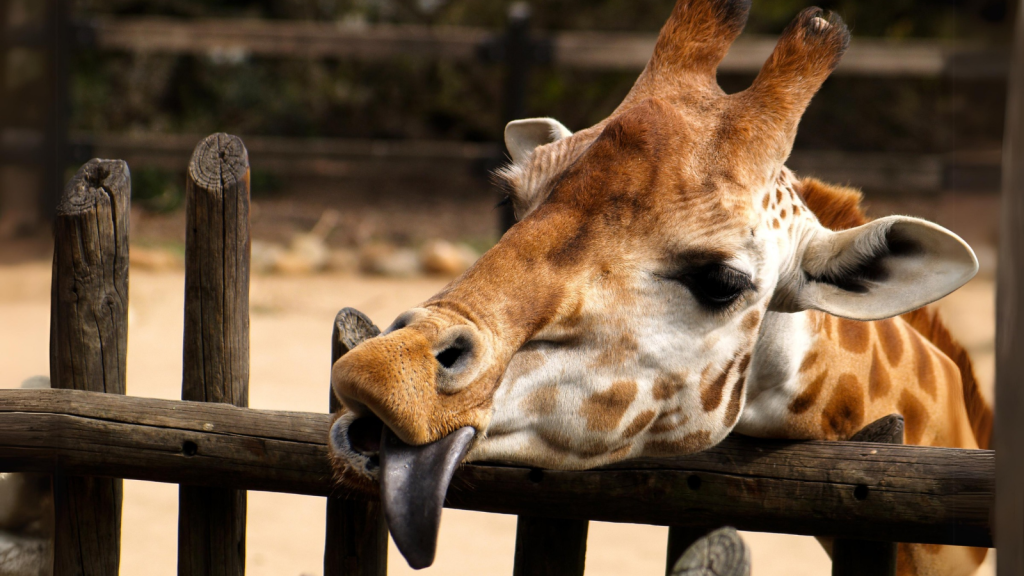The animal kingdom is full of fascinating feeding strategies, but some creatures take it to a whole new level by using their tongues as their primary eating tool. These remarkable animals have specialized tongues that help them catch, manipulate, and consume their food in ways that might seem alien to us. From lightning-fast projectiles to sticky traps, these tongues come in all shapes and sizes. Each one is perfectly adapted to its owner’s diet and lifestyle. Get ready to be amazed by these 15 animals that have turned their tongues into extraordinary eating utensils. Mother Nature is weird and amazing!
Chameleon
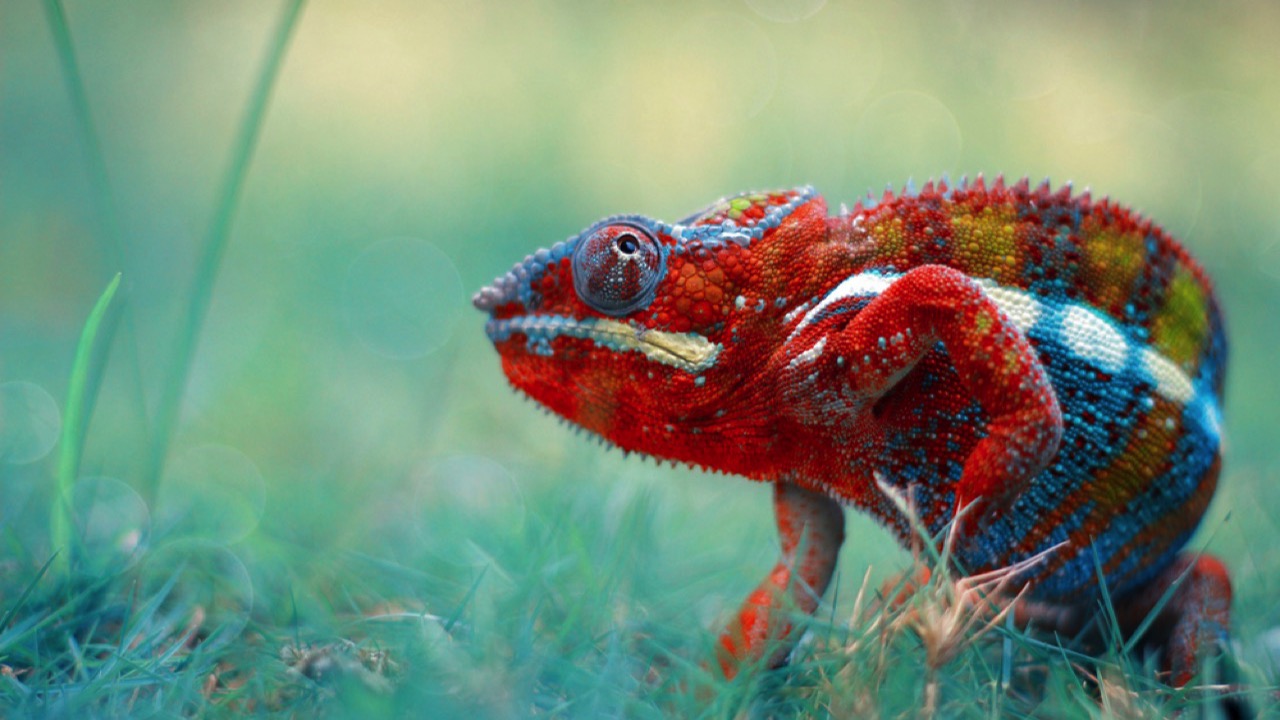
Chameleons are famous for their color-changing abilities, but their tongues are equally impressive. A chameleon’s tongue can be up to twice the length of its body and can shoot out at speeds of up to 60 miles per hour. The tip of the tongue is sticky and shaped like a cup, perfect for grabbing insects mid-flight. Once the prey is caught, the tongue retracts just as quickly, bringing the meal right to the chameleon’s mouth. Interestingly, smaller chameleon species often have proportionally longer tongues, allowing them to catch prey from a greater distance relative to their body size.
Anteater
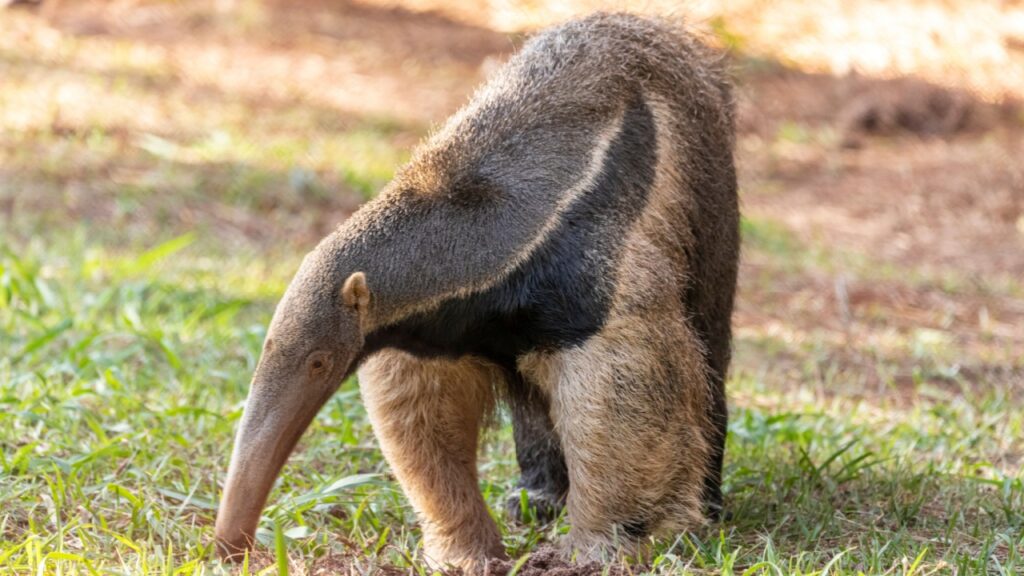
As their name suggests, anteaters specialize in eating ants and termites. Their tongues can extend up to two feet in length and are covered in sticky saliva. An anteater can flick its tongue in and out of an anthill up to 160 times per minute, trapping insects on its sticky surface. These remarkable animals can consume up to 35,000 ants and termites in a single day using this efficient feeding method. Anteaters also have poor eyesight and rely heavily on their keen sense of smell to locate their prey.
Frog
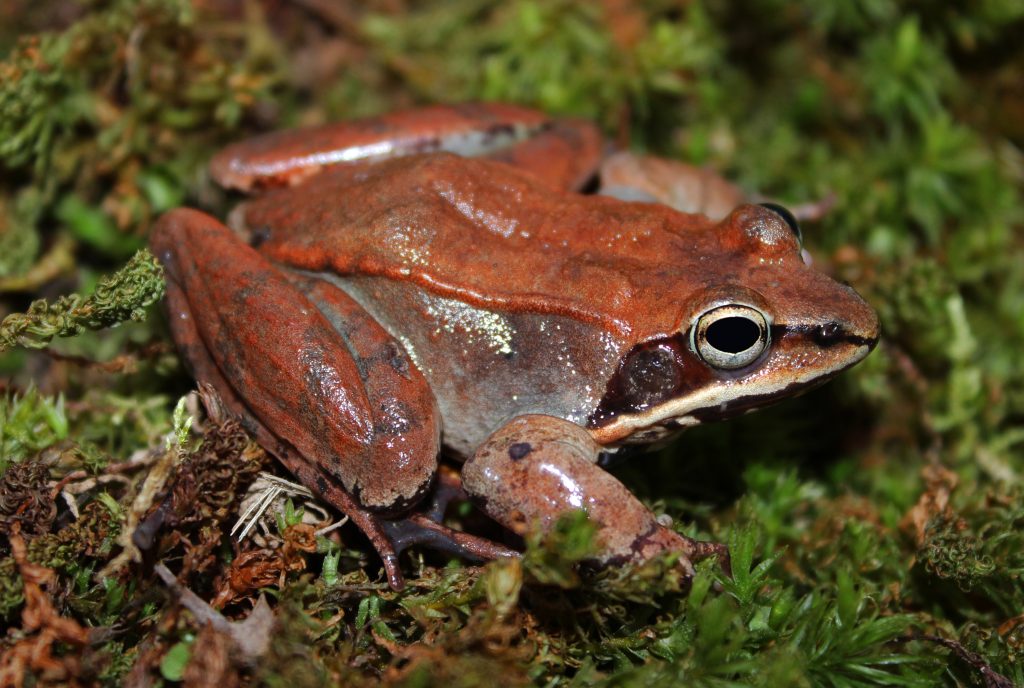
Frogs have some of the fastest tongues in the animal kingdom. When a frog spots its prey, it can shoot out its tongue, catch the insect, and bring it back to its mouth in less than a second. The frog’s tongue is attached to the front of its mouth rather than the back, allowing it to flip out rapidly. The tongue is also extremely sticky, ensuring that the prey doesn’t escape once caught. Some frog species can generate a force more than 12 times their own body weight with their tongues, making them incredibly efficient predators.
Pangolin
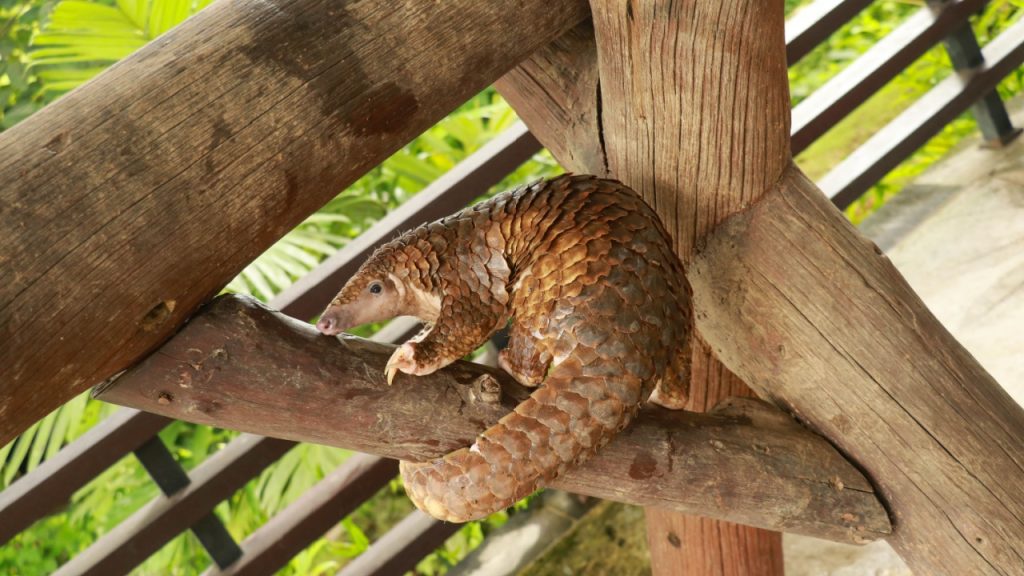
Pangolins, often called scaly anteaters, have long, sticky tongues that can be up to 16 inches long. These tongues are attached near the pelvis and last pair of ribs, rather than in the throat like most mammals. When fully extended, a pangolin’s tongue can be longer than its entire body. They use these extraordinary tongues to reach deep into ant and termite nests, licking up insects with incredible efficiency. Pangolins also lack teeth, so they swallow small stones to help grind up their food in their stomachs.
Hummingbird
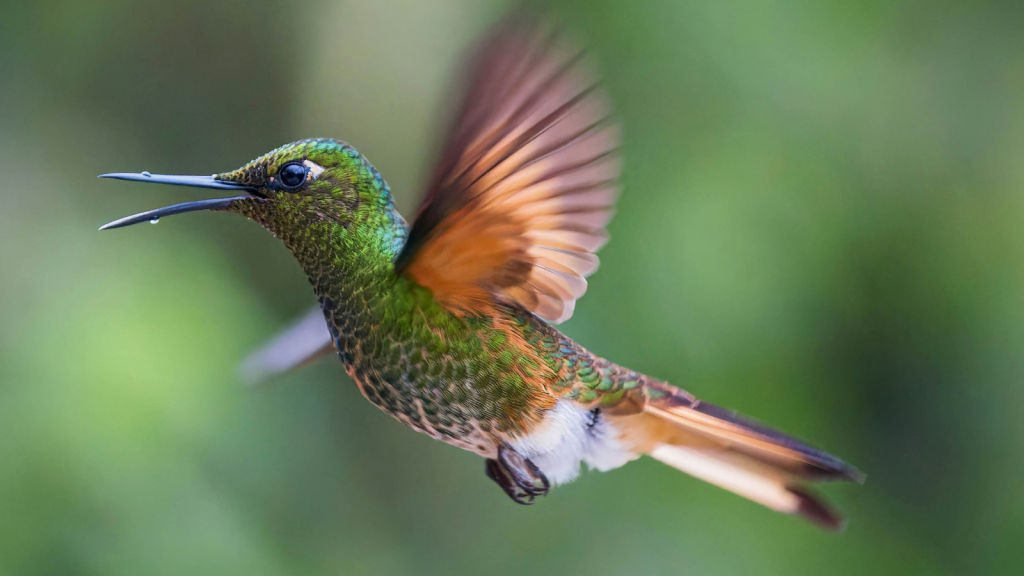
Hummingbirds have specialized tongues that allow them to feed on nectar from flowers. Their tongues are forked at the tip and have grooves along the sides. When extended into a flower, the tongue splits and the grooves curl outward, creating tiny tubes that trap nectar through capillary action. A hummingbird can extend and retract its tongue up to 20 times per second, allowing it to consume large amounts of nectar in a short time. This rapid tongue movement is crucial for hummingbirds, as they need to consume more than their body weight in nectar each day to fuel their high-energy lifestyle.
Giant Palm Salamander
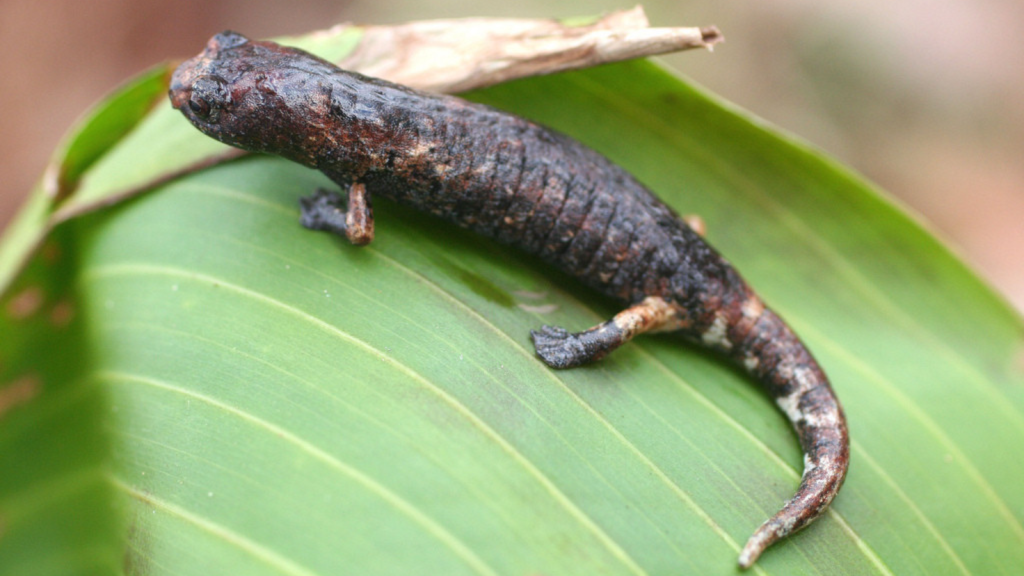
The giant palm salamander, native to Central America, has a unique projectile tongue. Unlike many other amphibians, its tongue is attached to a cartilage rod that can be thrust forward at high speed. This allows the salamander to catch prey from a distance without moving its entire body. The tongue’s sticky tip ensures that once caught, the prey is unlikely to escape. This specialized feeding mechanism is particularly useful for the giant palm salamander, as it allows them to catch fast-moving prey while remaining camouflaged and stationary.
Sun Bear

Sun bears have the longest tongues of any bear species, measuring up to 10 inches long. These exceptionally long tongues help them reach into crevices and holes in trees to extract insects and honey. Sun bears are sometimes called “honey bears” due to their fondness for honeycomb. Their long, agile tongues allow them to scoop out honey and larvae from bee nests with ease. The sun bear’s tongue is also useful for gathering termites and ants, which make up a significant portion of their diet in some areas.
Giraffe
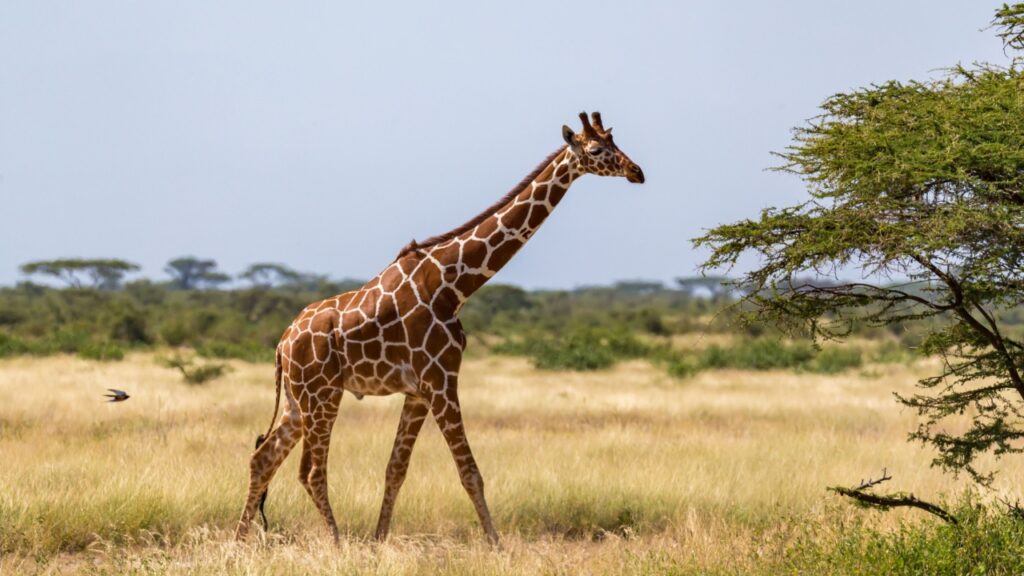
Giraffes have incredibly long tongues, measuring up to 21 inches in length. These prehensile tongues are dark blue-black in color, possibly to protect them from sunburn during feeding. Giraffes use their tongues to wrap around leaves and pull them into their mouths. The tongue’s length also allows them to clean their ears and nostrils, demonstrating its versatility beyond just feeding. Giraffes have developed thick saliva that helps protect their tongues from the sharp thorns of acacia trees, their favorite food source.
Okapi
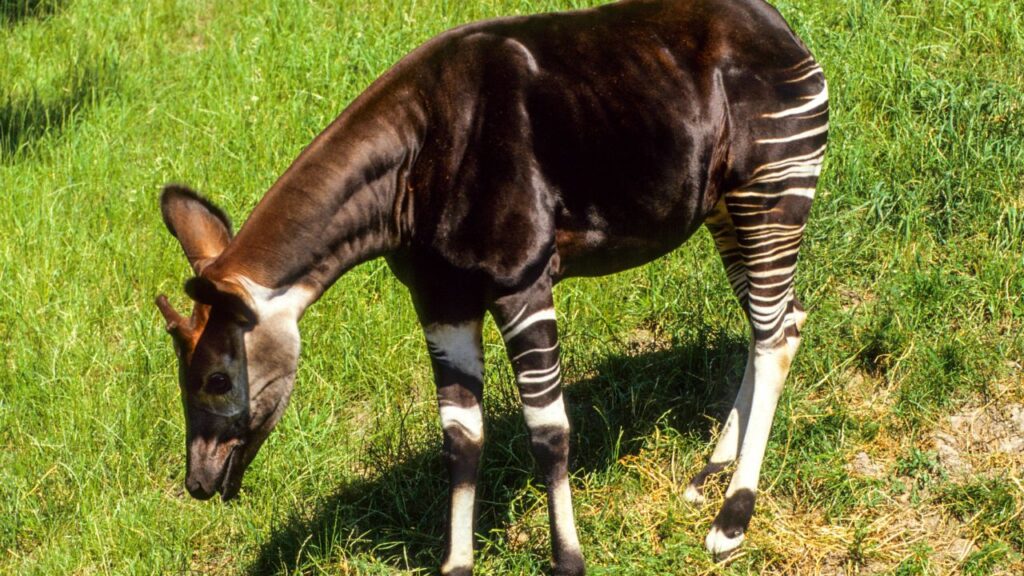
Related to giraffes, okapis also have long, prehensile tongues that can reach up to 14 inches in length. They use their tongues to strip leaves from branches and to clean their eyes and ears. The okapi’s tongue is so long that it can lick the back of its own ears! This remarkable ability helps them maintain cleanliness in their forest habitat. Okapis also have a unique adaptation where their tongues turn a deep blue-black color when they reach maturity, similar to their giraffe relatives.
Tube-Lipped Nectar Bat
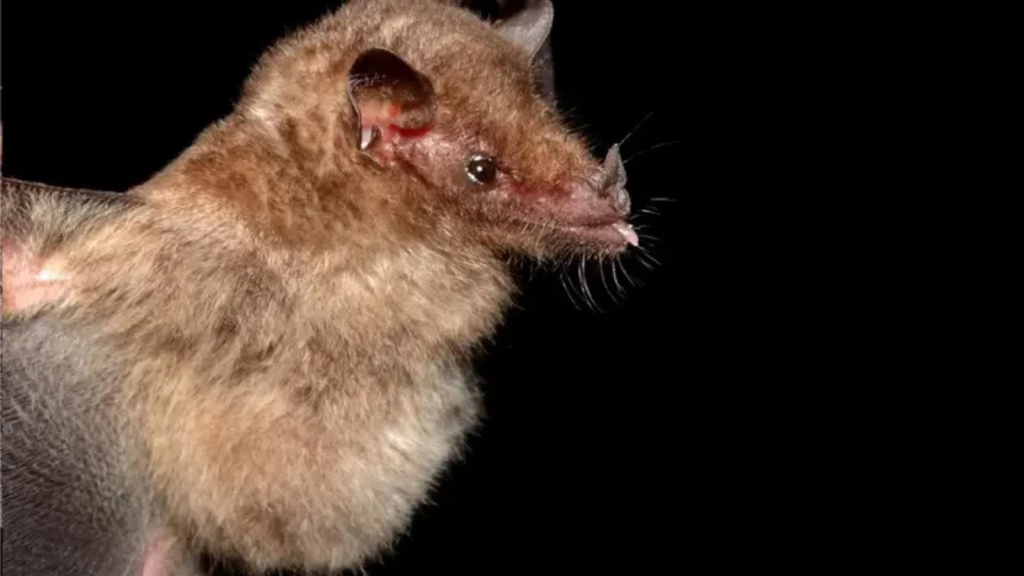
The tube-lipped nectar bat has the longest tongue relative to body size of any mammal. Its tongue can extend up to 1.5 times the length of its body. This extraordinary adaptation allows the bat to feed on nectar from deep, tubular flowers that other pollinators can’t reach. When not in use, the tongue is stored in the bat’s rib cage to prevent it from getting in the way during flight. This species plays a crucial role in pollinating certain types of plants that have co-evolved with these long-tongued bats.
Woodpecker
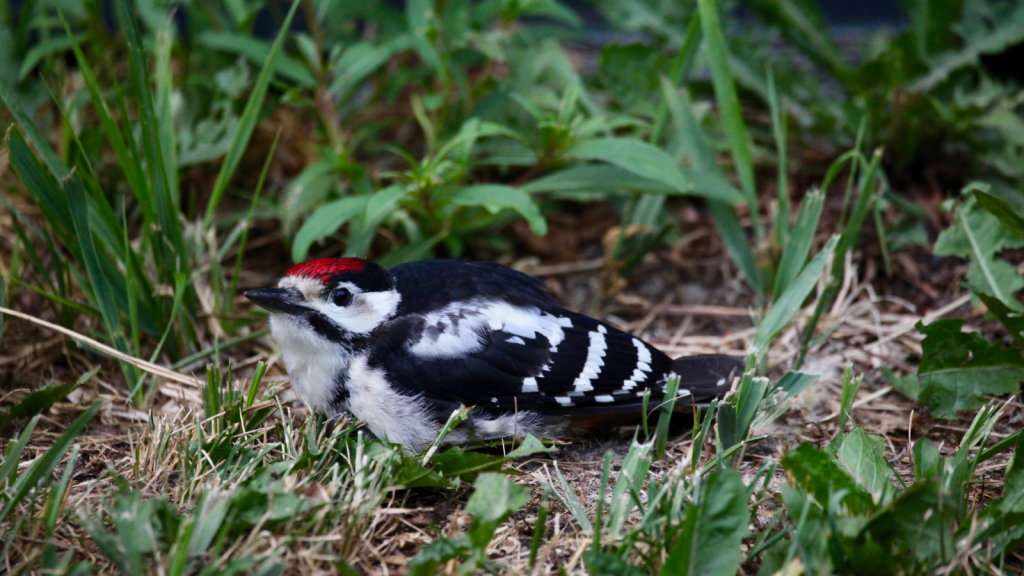
Woodpeckers have uniquely adapted tongues that help them extract insects from trees. Their tongues are extremely long and can wrap around the back of their skull when retracted. The tip of a woodpecker’s tongue is barbed and covered in sticky saliva, perfect for spearing and trapping insects in wood crevices. Some woodpecker species can extend their tongues up to 4 inches beyond the tip of their beaks. The woodpecker’s tongue is also cushioned at the back of the skull, helping to absorb the shock from their powerful pecking.
Butterfly
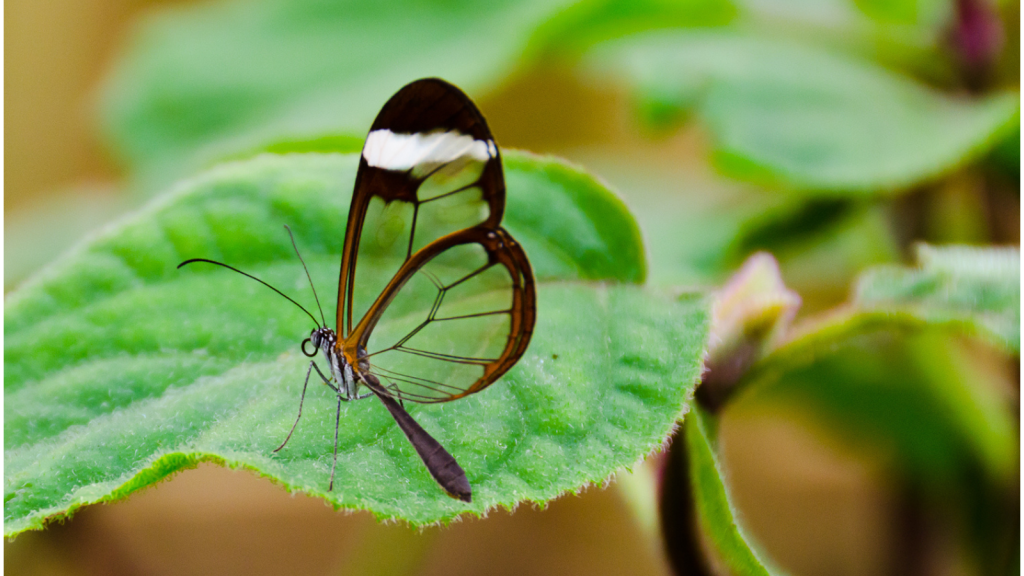
Butterflies don’t have traditional tongues, but they do have a specialized feeding tube called a proboscis. This long, coiled structure functions like a straw, allowing butterflies to suck up nectar from flowers. When not in use, the proboscis coils up neatly under the butterfly’s head. Some butterfly species have proboscises that are longer than their entire body. Interestingly, when a butterfly emerges from its chrysalis, its proboscis is in two halves which must be zipped together before it can feed.
Echidna
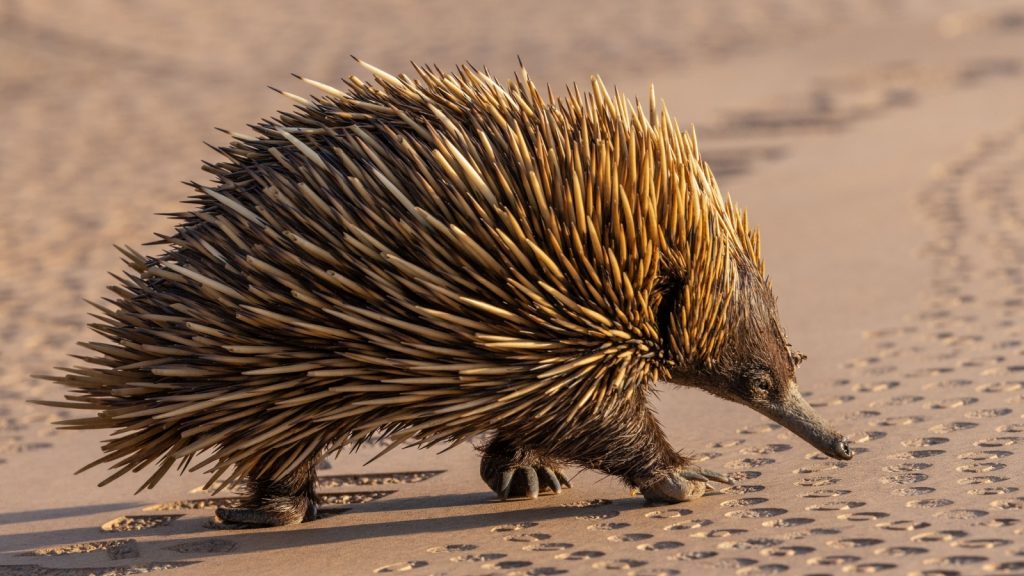
Echidnas, also known as spiny anteaters, have long, sticky tongues that can extend up to 7 inches beyond their snouts. These tongues are covered in sticky saliva and tiny, backward-facing spines that help trap ants and termites. An echidna can flick its tongue in and out up to 100 times per minute when feeding. Despite their name, echidnas are not closely related to true anteaters but are egg-laying mammals like their close relative, the platypus. Echidnas also have electroreceptors on the tips of their snouts, which help them detect the electrical signals produced by insect movements.
Alligator Snapping Turtle
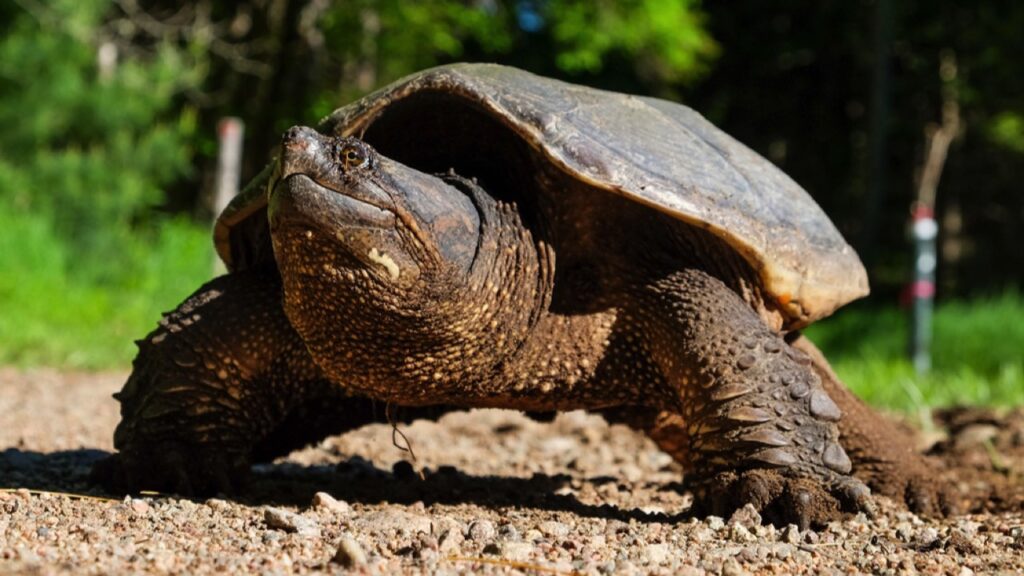
The alligator snapping turtle has a unique way of using its tongue to catch prey. It has a small, pink, worm-like appendage on its tongue that it uses as bait. The turtle lies motionless on the river bottom with its mouth wide open, wriggling this lure to attract fish. When a curious fish approaches, the turtle quickly snaps its powerful jaws shut, using its tongue as a fishing lure. This strategy, known as lingual luring, allows the alligator snapping turtle to conserve energy while still effectively catching prey in murky waters where visibility is poor.
Jackson’s Chameleon
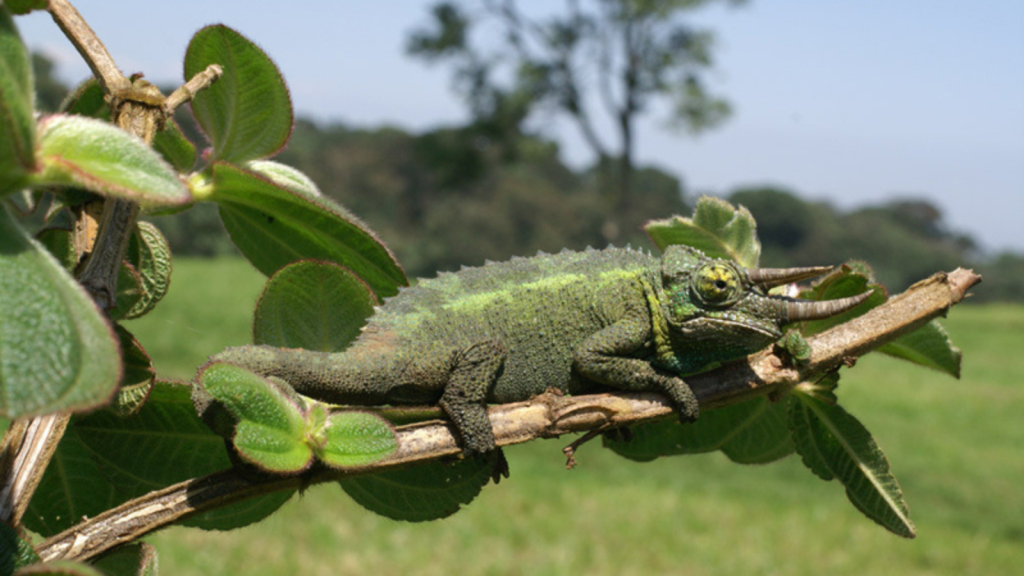
While all chameleons have impressive tongues, the Jackson’s chameleon takes it to another level. Its tongue can accelerate from 0 to 60 miles per hour in a hundredth of a second, subjecting the chameleon to 264 times the force of gravity. This makes the Jackson’s chameleon’s tongue one of the fastest-moving body parts in the animal kingdom, allowing it to catch prey before it even realizes what’s happening. The Jackson’s chameleon’s tongue is so powerful that it can capture prey weighing up to 30% of its own body weight.

